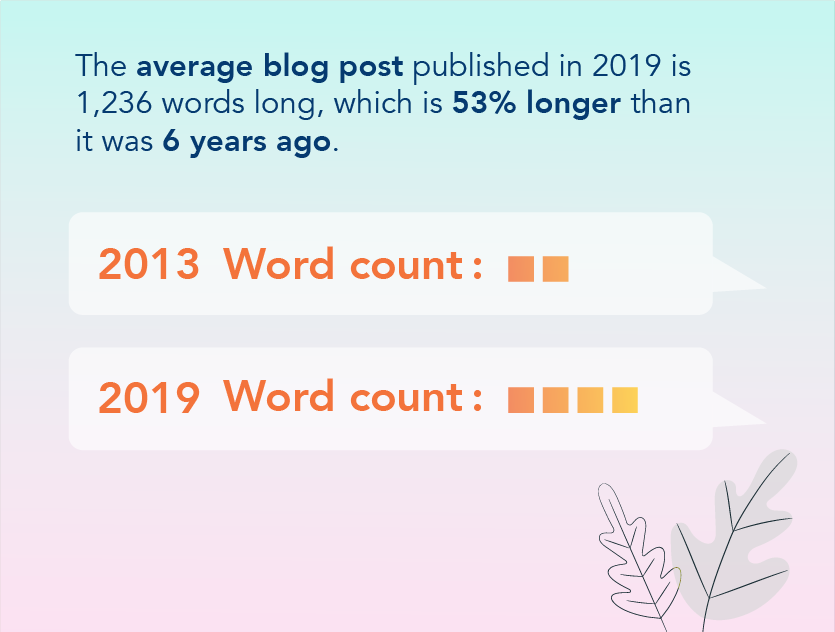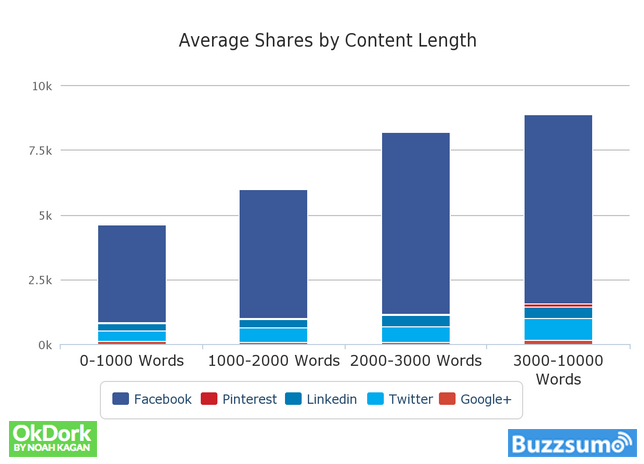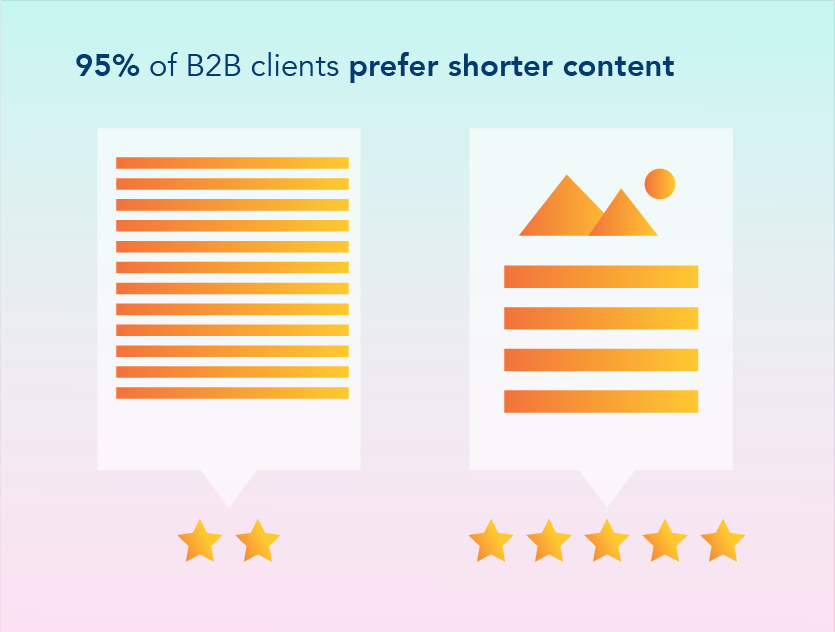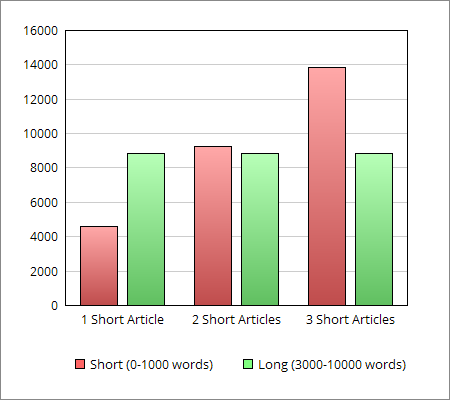

Long form or short form content — which reigns supreme?
Short and sweet, or long and detailed? We explore what each format brings to the table, and which works best for you.

When it comes to content marketing, the vast number of ways to present your content can be overwhelming. And one question that constantly arises: is short form or long form content better?
So let’s pit the two against each other, and find out which one comes out on top.
Long form content: an overview

Before we can delve into the advantages of using long form content, we first need to understand the length we’re dealing with:
- Articles or blogs between 2,000 to 3,000 words (though this definition changes depending on who you ask)
- Pillar content such as e-books and guides
- Videos longer than 10 minutes
- Podcasts
In this day and age where attention spans are short, it may seem counterintuitive to create long form content over shorter, snappier ones.
But that’s not always the case. In fact, here are some reasons why brands use long form content.
Establishes credibility
Long form content is often used to inform and educate, or to take a deep dive into a particular topic. After all, you’ll need a longer word count to give well-rounded instructions or back up your points.
When your content is comprehensive and well-researched, you’re establishing yourself as a credible source of information, while also demonstrating your expertise in the subject at the same time.
IBM, for example, puts out lengthy guides, blog posts and even their own podcasts all about tech topics and uses them to showcase their experience and market their services.
Long form storytelling
We all know about the power of storytelling in content marketing and how it can capture the attention and hearts of your audience. Long form content gives you the space to weave an interesting narrative to put their products and services out there.
In 2019, McDonalds took an innovative twist on long form storytelling with their podcast series “The Sauce”. A series of three podcasts parodied the investigative journalistic style by “investigating” the McDonald’s Sze Chuan sauce saga back in 2018.
As it turns out, all of this was part of a marketing strategy to tease the return of the Sze Chuan sauce in question. To McDonalds’ surprise, the podcast reached number 94 on the iTunes top-100 podcast chart just within a day of its release.
Greater visibility
One of the biggest advantages of using long form content is its ability to drive more traffic to your website and rank higher on search results.
Data has shown that the longer the content, the more likely it is to be shared. A study conducted by Okdork in 2017 identified this correlation when analysing 100 million articles on Google.

In addition to that, long form content also gets 77% more backlinks than short articles, and it’s much easier to include long tail keywords — which account for 70% of all web searches and are easier to rank higher than common keywords.
With higher SEO, more people will be able to find your long form content and this, in turn, generates greater traffic to your site.
Short form content: an overview

On the other end of the spectrum lies short form content, which includes:
- Articles of less than 1,000 words
- Videos under 10 minutes long
- Visual content such as memes, gifs and carousels
Even with all the benefits of long form content, short-form content still remains popular among brands and the public. In fact, 95% of B2B clients have expressed that they prefer shorter format content.
Here are some of the reasons why short form content continues to be so popular.
Appeals to shorter attention spans
It’s no secret that the global attention span has been getting shorter. In fact, studies have shown that 55% of the time, people spend less than 15 seconds on a page.
So how do brands come up with content marketing that is both eye-catching and easily digestible? This is where short form content thrives.
In particular, visual short form content such as gifs and short videos work well for this. This calming looping Instagram video by Calm, a meditation app, for example, not only appeals to their target audience (individuals in need of relaxation), but its visual elements also make it eye-catching.
Mobile-friendliness
Short form content tends to be more mobile-friendly. After all, it’s much easier to read a 600 word article on your smartphone than a 2,000 word one.
And mobile-friendliness has become increasingly important in this day and age. With 52% of all website traffic generated from mobile, short form content will be better able to expand your brand’s reach and improve accessibility.
Less resources needed
Even though data has shown that long form content generates more backlinks and shares, short form content requires less time and resources to create.
This means that in the time needed to create a single piece of long form content, you can create multiple pieces of short form content.
And since three short articles can actually outperform a longer article in terms of average social shares, it may actually be more beneficial for brands to put out short form content regularly.

So how do you choose?
Ultimately, there is no hard and fast answer to which length of content is better than the other. It all comes down to which form best suits your brand, your audience, and what you want to achieve with your content marketing.
If you’re still unsure, here are some tips that might help you in your content creation process.
Your audience
Long form content gives you more space to educate your target audience about your brand and your services, making it more effective for customers that are seeking to learn more about your brand.
On the other hand, short form content is great for customers that are already familiar with your brand and who want to know the latest information, or for capturing the attention of newer customers and leading them to your website.
You should also keep in mind the demographic and preferences of your target audience! Find out more about them using data and choose the format that works best for them.
Your product or service
In general, brands that provide products or services that are more technical in nature, such as IT services, need long form content to discuss the details in-depth.
Additionally, the more expensive the product, the longer the content should be to justify the price to your customers.
Your brand image
As mentioned earlier, comprehensive long form content can give your brand authority in the subject or field. If you want to present a formal and professional image to your clients or customers, long form content is likely the way to go.
Alternatively, short form content tends to be more casual and fun, and presents a more welcoming brand image to the regular customer.
Polygon’s different content marketing strategies demonstrate how the format can change up your brand image drastically. For example, its review on the PlayStation 4 was written in long form, complete with illustrations and a video review for users who prefer to watch than read. This review gives off a more professional image in contrast to their other short form content like witty posts on their Instagram page.
A healthy mix
Both long and short form content have their own pros and cons. So why not use a mixture of both to ensure that all your bases are covered?
And that’s what we do here at Click2View; we put out social media posts on our Instagram and LinkedIn to promote our blog posts.
Ultimately, content length isn’t always everything. It all comes down to the quality and type of your content, and how well it suits your audience.
Don’t let binary terms like short and long hold you back. With so many options available, find the content length that best suits your needs.
Need a content marketing format that is customised to you? Reach out to our CEO Simon Kearney at [email protected] and let us help.
Read more from Click2View:
- Podcasts come in all genres — what makes each of them stand out?
- Here’s how we mined stories to build a content hub.
- Strengthen your content marketing with data storytelling.
Sign up to our newsletter for a weekly update on the latest content marketing news. Don’t forget to subscribe to our YouTube channel too!
Click2View is Southeast Asia’s premiere full-service independent B2B content marketing agency servicing clients like Microsoft, Google, Visa, Prudential, and the Lee Kuan Yew School of Public Policy.








